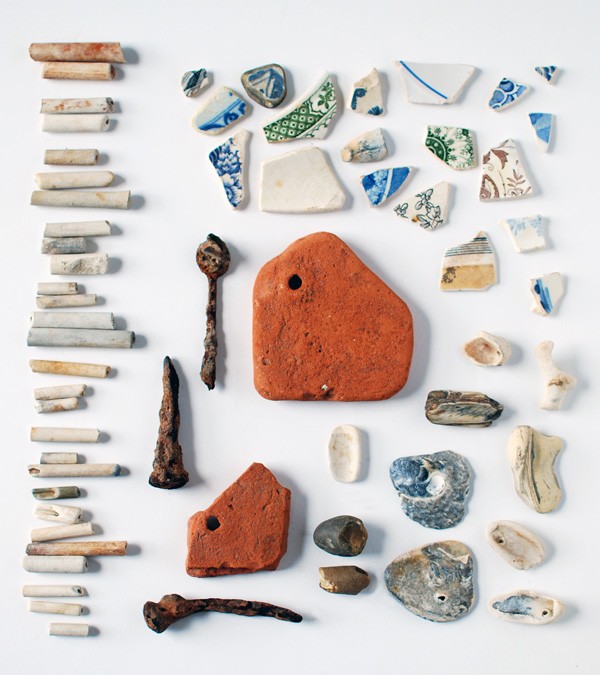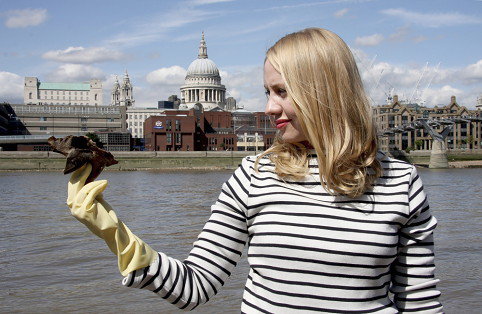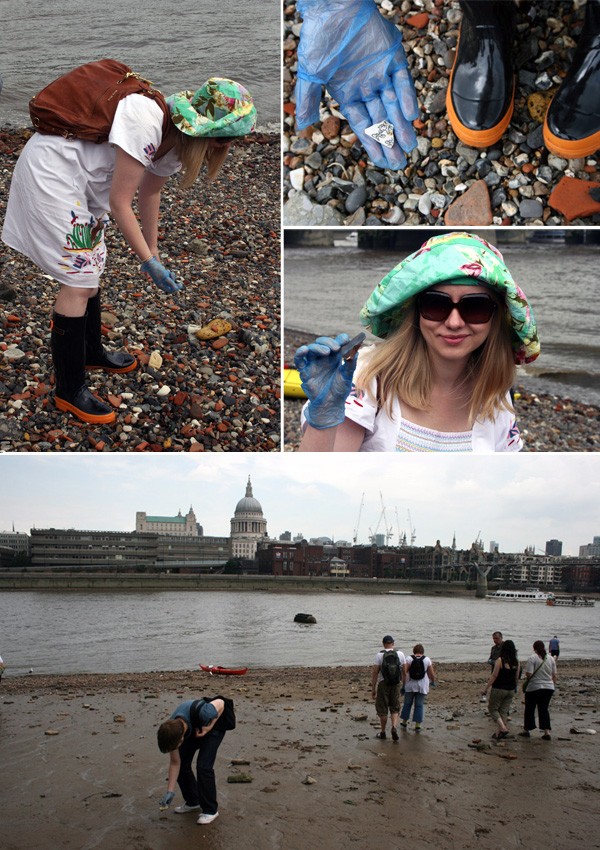My Collections: Thames Beachcombing Finds
 From ’60s activist badges to ‘80s erasers to… my Thames beachcombing finds. It’s a pretty good reflection of my diverse nerdy interests.
I’m a frustrated archaeologist. I really wanted to study archaeology at university but went down the English literature route instead. When we first moved to London, I was following (mostly all-male American) metal-detecting groups online, who organised weekenders on fields all over Britain, digging for treasure. Excitement!
But when the metal-detecting thing didn’t eventuate, I started to look in my own backyard. Literally. We lived on Kingsland Road, an old Roman road which was the main route heading north out of London. I had a little dig around the garden beds in our backyard, hoping to unearth a Roman coin or two. Apparently they’re a dime a dozen in and around the City. No such luck.
But when I heard about all manner of ancient treasure that can be found on the banks of the Thames, I soon found myself Bankside one hot summer’s afternoon, one hand sheathed in latex and my feet encased in wellies.
From ’60s activist badges to ‘80s erasers to… my Thames beachcombing finds. It’s a pretty good reflection of my diverse nerdy interests.
I’m a frustrated archaeologist. I really wanted to study archaeology at university but went down the English literature route instead. When we first moved to London, I was following (mostly all-male American) metal-detecting groups online, who organised weekenders on fields all over Britain, digging for treasure. Excitement!
But when the metal-detecting thing didn’t eventuate, I started to look in my own backyard. Literally. We lived on Kingsland Road, an old Roman road which was the main route heading north out of London. I had a little dig around the garden beds in our backyard, hoping to unearth a Roman coin or two. Apparently they’re a dime a dozen in and around the City. No such luck.
But when I heard about all manner of ancient treasure that can be found on the banks of the Thames, I soon found myself Bankside one hot summer’s afternoon, one hand sheathed in latex and my feet encased in wellies.

Me, wearing rubber gloves and showcasing my latest find: a bit of old bone. Photo courtesy of Time Out London.

Just another sunny day in London... Photos by Rebecca Lowrey Boyd.
Thames Beachcombing Fast Facts
- Thinking of beachcombing the Thames? Don't touch anything without wearing rubber gloves - you can get Weil's disease from rat urine. Really nasty (and potentially fatal).
- Wear sensible, fully-enclosed shoes and look out for broken glass and beer bottles.
- Take a plastic bag for your finds.
- Go beachcombing at low tide only. Click here for the Thames Tide Table.
- Read up on the UK's Portable Antiquities Scheme. To report your finds, get in touch with your local Finds Liaison Officer. They will identify and record your finds onto their database for you and others to see and researchers to study.
- Want to go Thames beachcombing with archaeologist Fiona Haughey? Click here for her schedule with London Walks. You might need to wait until she returns from her latest dig in Turkey.
- Want more info about the Thames? Head to the Thames Discovery Programme - a really brilliant resource for London enthusiasts.
- Want to see more London archaeological finds? Make a beeline to one of my favourite London haunts, the Museum of London (not to be confused with The British Museum).







